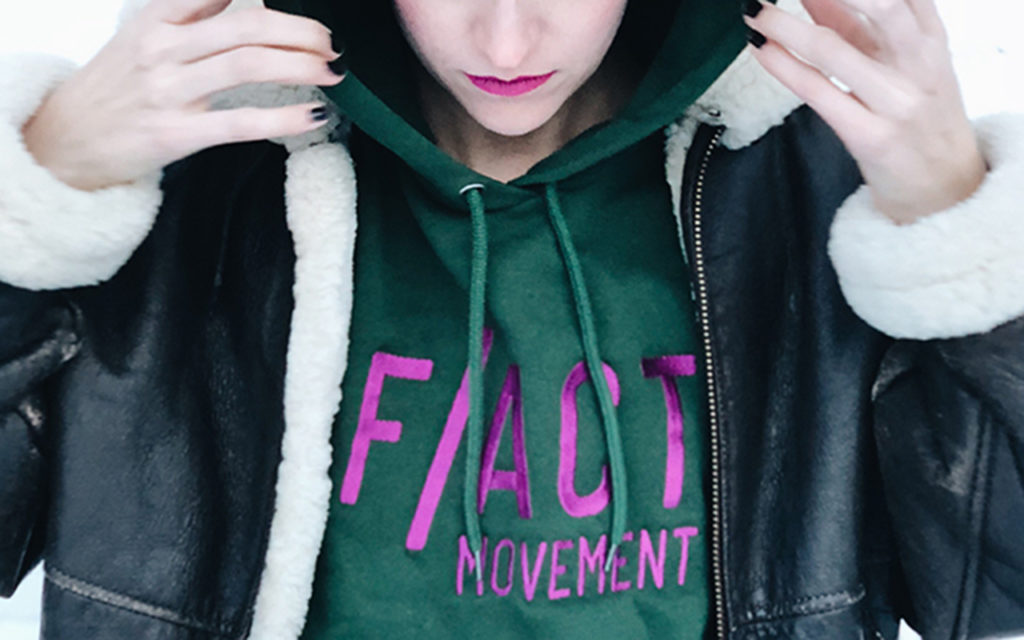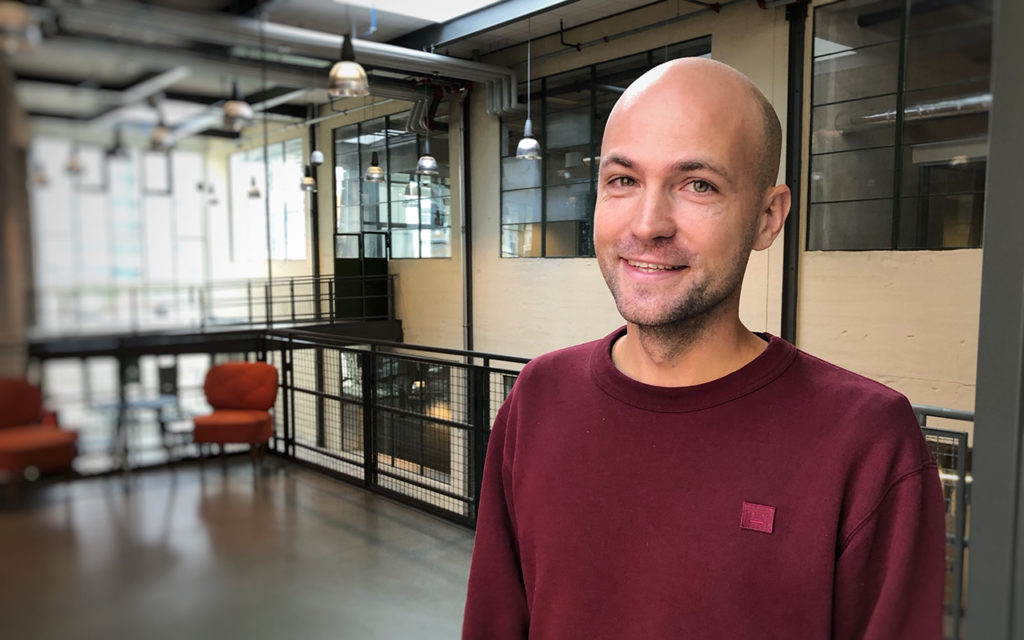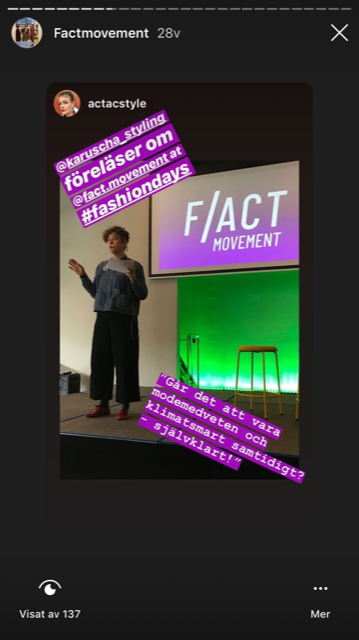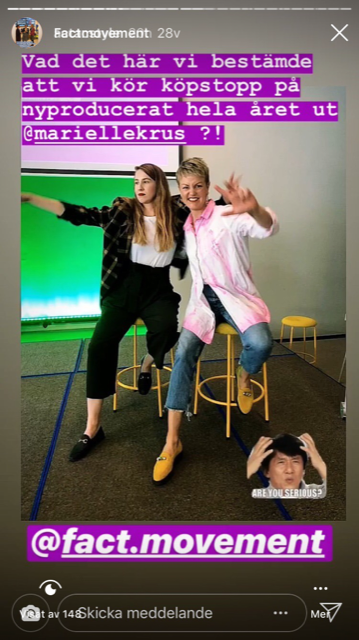One Year Later: F/ACT Movement

F/ACT Movement went from an idea on paper for sustainable fashion consumption to a movement involving thousands. The purpose was to use the knowledge gained from the re:textile project and other research projects to influence a wider range of consumer groups to consume more sustainably. At the same time, it wanted to create a deeper understanding of how circular business models can be more commercial.
Now that 2019 is almost finished, the plan for 2020 is to scale up the project, both regionally and nationally. Adrian Zethraeus is the project manager for re:textile, which, together with the Gothenburg Region and the Swedish Fashion Council, is behind the project.

What are your feelings about how F/ACT Movement has developed?
“Above all, the impact on social media has been much greater than I had expected. As a research and innovation project, it is unusual to work with Instagram as a method, but in this project, it has been a key factor. Not only have we learned a lot about sustainable consumption, we have also created a movement with enormous potential for widespread influence.”
What was your favorite thing from F/ACT over the past year?
“It was definitely the first meeting with our wonderful factivists. At that moment, it became clear to me how spot on we actually were. Our ideas to help consumers express their personalities by activating their wardrobes instead of filling them with new clothing, and not just working with passive one-way communication but actually doing things: discussing, testing, learning and reflecting on the issues.
Each F/ACT meeting started with an hour of discussion in groups to go through the past month and to exchange experience and thoughts, and then introduce the theme and wardrobe challenges for the coming month. In a way, the F/ACT process was like the study circles of old, which were a cornerstone in the building modern Swedish society. Once again, we need to come together for a better world, and every person’s development and actions are important. Everyone is to be included and everyone can be involved!”
What could you have done differently?
“We perhaps tried to do too much in a single project: ambassadors, grassroots movements, business development, digitalization, festivals, ethnological research… Above all, those of us in the project administration who had many sleepless nights trying to figure out how the different parts would fit together and support each other, when every part was almost in itself a separate project. We could have also budgeted for a dedicated social media editor from the start. That was something we did not think about when we applied for the project but were forced to reallocated resources for since it was difficult to create good and relevant content for Instagram’s format, even if the factivists generated a lot of content,” says Adrian Zethraeus.


